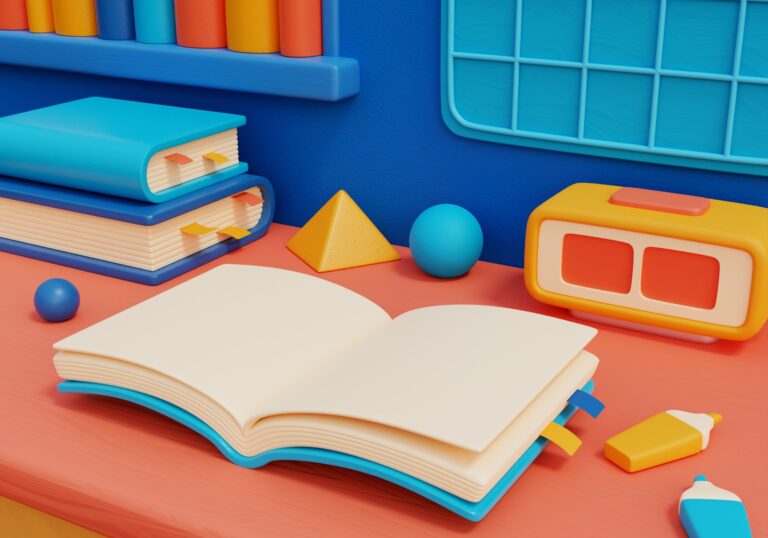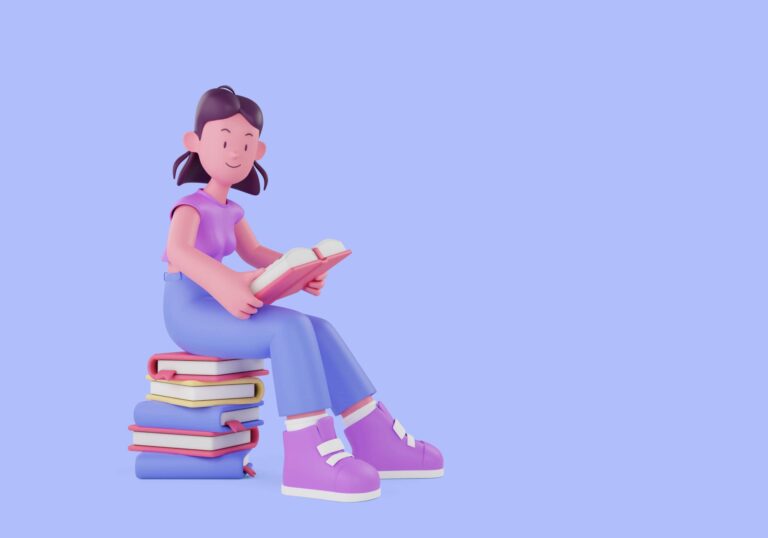What is Reflective Teaching
In case you’re sensing that your instructional methods are growing monotonous or questioning whether your lessons are impactful, adopting a reflective approach to teaching is an excellent strategy to rejuvenate your enthusiasm and assurance in teaching English as a Second Language. Let’s examine the concept of reflective teaching more thoroughly, its significance, and how you can integrate this approach into your professional routine.
What is Reflective Practice in Teaching
Typically, educators will reflect on their classroom activities, considering the reasons behind their methods and evaluating their effectiveness. Reflective practice involves intentional contemplation within an organized system of self-monitoring and self-assessment aimed at ongoing improvement. It plays a key role in successful ongoing professional development and becoming a more adept educator. In other words, Reflective teaching involves educators critically analyzing their teaching methods to assess how well they work.
Depending on the results of this examination, they might need to adjust or enhance their teaching strategies. The process of reflective teaching offers a great opportunity for novice and experienced educators to enhance their instructional techniques and promote their mental well-being. If you feel overwhelmed or need support documenting your reflective journey, you may consider seeking assistance from a reflective essay writing service. You might wonder how to incorporate this reflective teaching approach and self-evaluation into your hectic routine. In the upcoming segments, we will present you with actionable tips and advice, including strategies for utilizing a journal for reflective teaching to record your self-reflection activities.
What are the Characteristics of Reflective Teaching?
While the methods of reflective teaching can vary widely, several key traits consistently appear across all different reflective teaching approaches.
Reflective teaching involves observing classroom activities, understanding their reasons, and seeking ways to enhance them.
When you engage in reflective teaching, it’s uncommon to repeat a lesson identically, as this approach prompts you to examine and reassess your default teaching strategies. While some educators may document their reflective thoughts, writing isn’t a necessity.
Often, teachers opt to discuss their teaching experiences with peers or mentors, sometimes referred to by Farrell as a “Critical Friend.”
Reflective teaching is typically a joint effort that might include input from a supervising teacher or a fellow educator. Regularly considering and conversing about the outcomes of your lessons can lead to valuable discoveries.
Mastering Self-Assessment: The Essence of Teaching
Every educator understands that lesson planning fundamentally means preparing resources and imparting knowledge. However, a truly effective teaching moment entails much more. Assessments or evaluations, for instance, are crucial components of fruitful lessons. The ideal moment to conduct these is immediately after the class, while the details remain vivid. Regular reflection on your teaching and its overall efficacy does demand organization, time, and patience, especially when the outcome wasn’t as anticipated, and emotions are intense.
Documenting your classroom experiences allows you to ponder and concentrate, helping you manage your feelings as you jot down your observations. This allows you to move forward, metaphorically turning the page. Even as emotions subside over time, you’ll retain a written record of what transpired.
Fortunately, the classroom isn’t solely composed of challenging times. Many teachers also enjoy memorable and meaningful interactions with their students, and recording these positive experiences is important. Especially during tough times, these cherished memories reinforce why we embraced this fulfilling and generous profession despite its demands and stress. Reflecting on these standout moments can significantly uplift your spirits. Doing so can also restore self-assurance and endurance, essential for sustaining a successful and prolonged teaching career.
Pedagogy and the SWOT Analysis
Seasoned educators often engage in one of the most beneficial strategies: reflecting on their practice. Through reflective teaching, instructors analyze and judge their teaching methods, students’ reactions, behaviors, and triumphs and shortcomings. This evaluation helps teachers become more conscious of the content they’re teaching, the reasons behind it, and the techniques they employ in their instruction. They must consider various factors, such as the lesson plan, the resources used, and the teaching setting.
Furthermore, it’s crucial to factor in the students – acknowledging their unique requirements and approaches to learning.
No matter how meticulously a lesson is prepared, it might still not succeed completely or at all. Teachers preoccupied with their workload frequently ignore these difficult or unsuccessful instances. As time passes, particularly months or even a year later, those recollections and their related feelings diminish. Consequently, teachers prepare for new lessons identically, with similar dedication, commitment, and methodology. If no adjustments are made, there’s a high chance the teacher will repeat the same routine and unfortunately face the same shortcomings again.
Rather than getting trapped in this destructive loop, have you considered applying the SWOT (Strengths, Weaknesses, Opportunities, and Threats) approach to evaluate your teaching strategies and their effectiveness? Analyzing your teaching shortly after each class can help pinpoint particular aspects students may have found confusing, overlooked, or valued. Remember to focus not just on your instructional techniques, but also on the students’ responses to your lessons.
Remember that critical reflection involves considering both praise and criticism. Whether your observations about your teaching methods and class sessions are good or bad, reflecting on past experiences is always valuable and instructive. Reviewing past actions makes us more ready for what lies ahead.
Dealing with Critical Self-Reflection
Many individuals crave validation and are apprehensive about facing reality. This is particularly evident in educational environments. Educators endeavor to gain the acceptance and comprehension of their pupils. They often assess their achievements by gauging and scrutinizing their students’ progress. What could motivate an educator to deliberately incorporate and embrace the practice of critical self-examination into their everyday activities?
Active problem-solving can be beneficial, whereas obsessive overthinking can be harmful. Continually recalling a distressing event, experiencing nightmares, or exhibiting physical signs of stress indicates that your inner being is gradually taking a toll on you, depleting your mental, physical, and emotional energy.
The thought of receiving critical feedback can often be scary and even emotionally distressing, since it challenges our core psychological needs for safety (such as feeling secure physically, socially, or financially) and a sense of value (our self-esteem, pride, or confidence). However, it does not have to be a negative experience. How you use your mind is crucial—it can be a valuable ally or a formidable adversary. It is important to master the art of mental discipline. By consistently practicing, you can cultivate a positive mental conversation that propels you closer to achieving your objectives.
Be mindful of your inner experiences, such as your ideas and emotions. By noting them down in an organized manner, you create a reference point for future consultation when needed. When you’re thinking more clearly, review these recorded observations. Treat these thoughtful observations as valuable insights drawn from your career. Search within them to find answers that will help you enhance your techniques and enrich your experience as an educator.
Imagine you’re looking over a colleague’s notes – what guidance would you offer them? It’s common for individuals to be overly critical of themselves while showing greater empathy towards others. Remember that evaluating oneself is a thoughtful process of maintaining equilibrium between aspiring for personal growth and embracing yourself. Acknowledge your limitations and areas where you feel comfortable, and strive to enhance yourself by gradually pushing past those limits daily.
The Reflective Teaching Journal
Every new morning presents a chance to start over. Remembering that obstacles build your resilience will solidify your belief in your ability to cope with difficult periods. This will boost your self-assurance. By evaluating triumphs or setbacks in your teaching experiences, you will improve your understanding and assessment of your teaching methods, enabling you to more effectively meet the needs of your students.
To enhance the look of your notes, consider using a reflective teaching journal (you can check out examples at this link). It’s a highly effective method for structuring ideas and recording everyday occurrences. Using templates with designated areas to explain the rationale and advantages of your teaching approaches is beneficial. Additionally, you should pinpoint aspects of your teaching that need refinement or enhancement and note any issues you face with the classroom environment.
I’ve been encountering problems at my university due to smokers congregating outside my classroom windows. They were not just loud, but they were also smoking directly outside the open windows, causing the room to fill with cigarette smoke. This became a distraction and irritation to the students. Although I shut the windows, the day was extremely warm and muggy, leading to discomfort for everyone in the room. After considering the issue and thinking about potential remedies, I took the initiative to request that our secretary create and display large signs with both images and words on the windows. Fortunately, this solution was effective, and our classroom’s learning environment has returned to normal.
Educators who examine and think deeply about their instructional methods can undergo shifts in their perspectives and gain a consciousness they feel can aid in their development as educators and enhance the support they give their pupils. The teaching reflection diary is certainly a valuable instrument for this educational investigation.
Seeking templates for journals for reflective teaching that are available for download and printing, for personal reflection? This page on our website hosts various templates for your usage.
Examples of Reflective Teaching
Various methods to engage in reflective teaching involve:
Educator diaries: Jot down your thoughts and experiences in a teaching diary after classes. Classroom evaluation: Get feedback on your teaching by having a mentor observe you, or self-assess by recording and watching your lessons.
Conversational feedback: Discuss your teaching sessions with a colleague who can provide helpful critiques. Investigative learning: Explore areas where you face challenges, and consider enrolling in professional development to enhance those skills.
Online communities: Participate in online teacher forums like the Bridge Teaching English Online Facebook Group to share insights into reflective teaching and gain more visibility within the field.
Teaching blogs: Create a blog to express your teaching experiences, as Rachel Tsateri does on The TEFL Zone, where she combines her exploration of teacher talking time with action research, demonstrating a scholarly yet practical side of self-reflection in teaching.
Personal teaching philosophy: Keep refining and expressing your principles on what constitutes effective teaching, and if you’re uncertain where to begin, look into developing a statement of teaching philosophy for English as a Second Language.
Experiment with various approaches to discover the one that suits you best. Starting with journaling is a straightforward option, however, if you are a teacher who thrives on interaction, you may find it more beneficial to collaborate with a trusted colleague or to engage with a group focused on teacher improvement.
Education, much like the process of acquiring knowledge, is a continuous expedition. One doesn’t transform into an excellent educator instantly, therefore it’s important not to be overly self-critical when a teaching session falls short of expectations. Rather, reflect deeply on your instructional methods to enhance your students’ educational encounters and advance within your teaching career.

Nicole Hardy
Article Author
Nicole Hardy is renowned in the fields of education and the arts journalism, particularly known for her detailed and insightful reporting on performing arts education. With a career spanning over a decade, she has established herself as a respected authority in this area. Hardy’s work is recognized for its in-depth analysis and engaging writing style. She holds a Master’s degree in Journalism from the University of Arts, specializing in arts and culture journalism.



